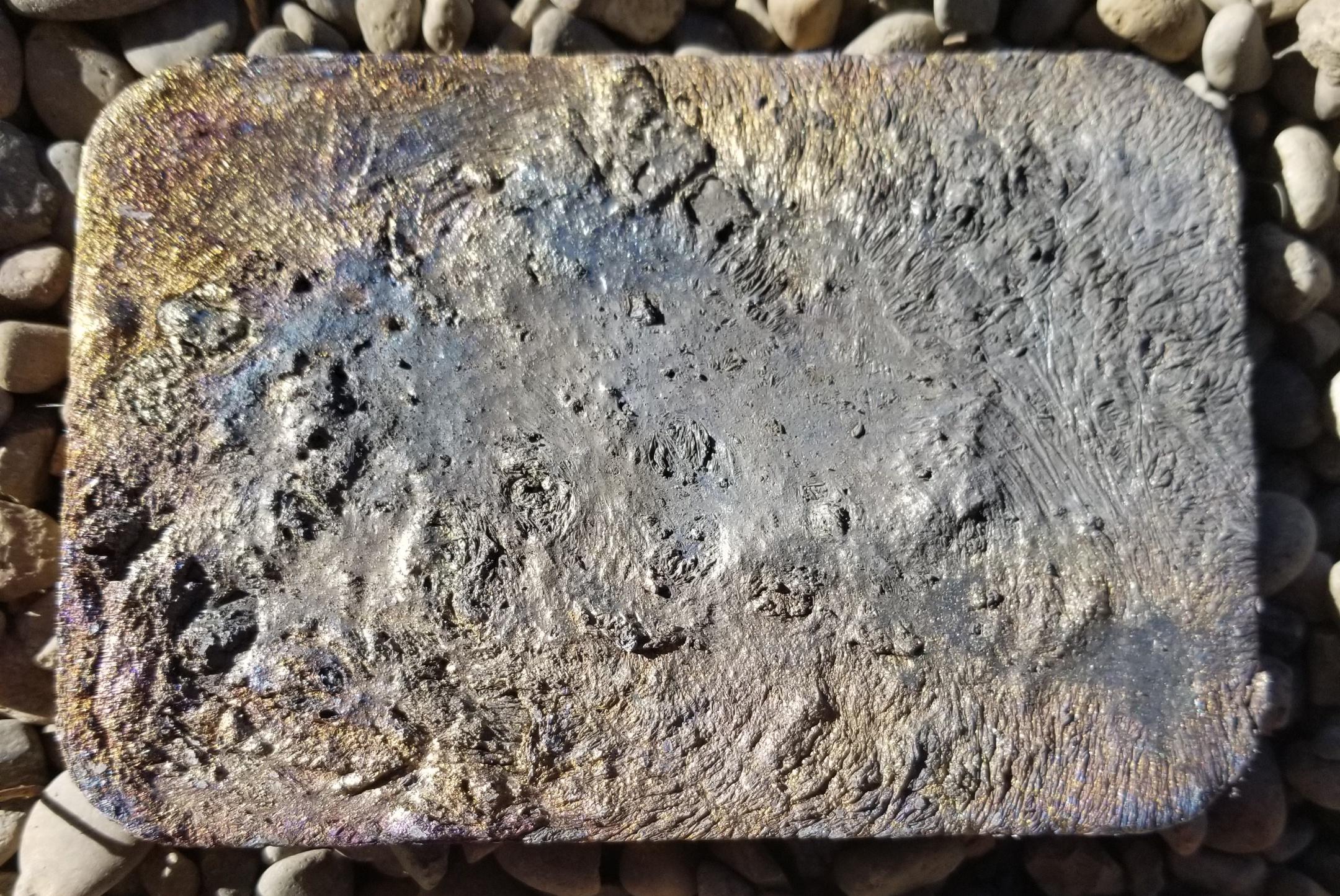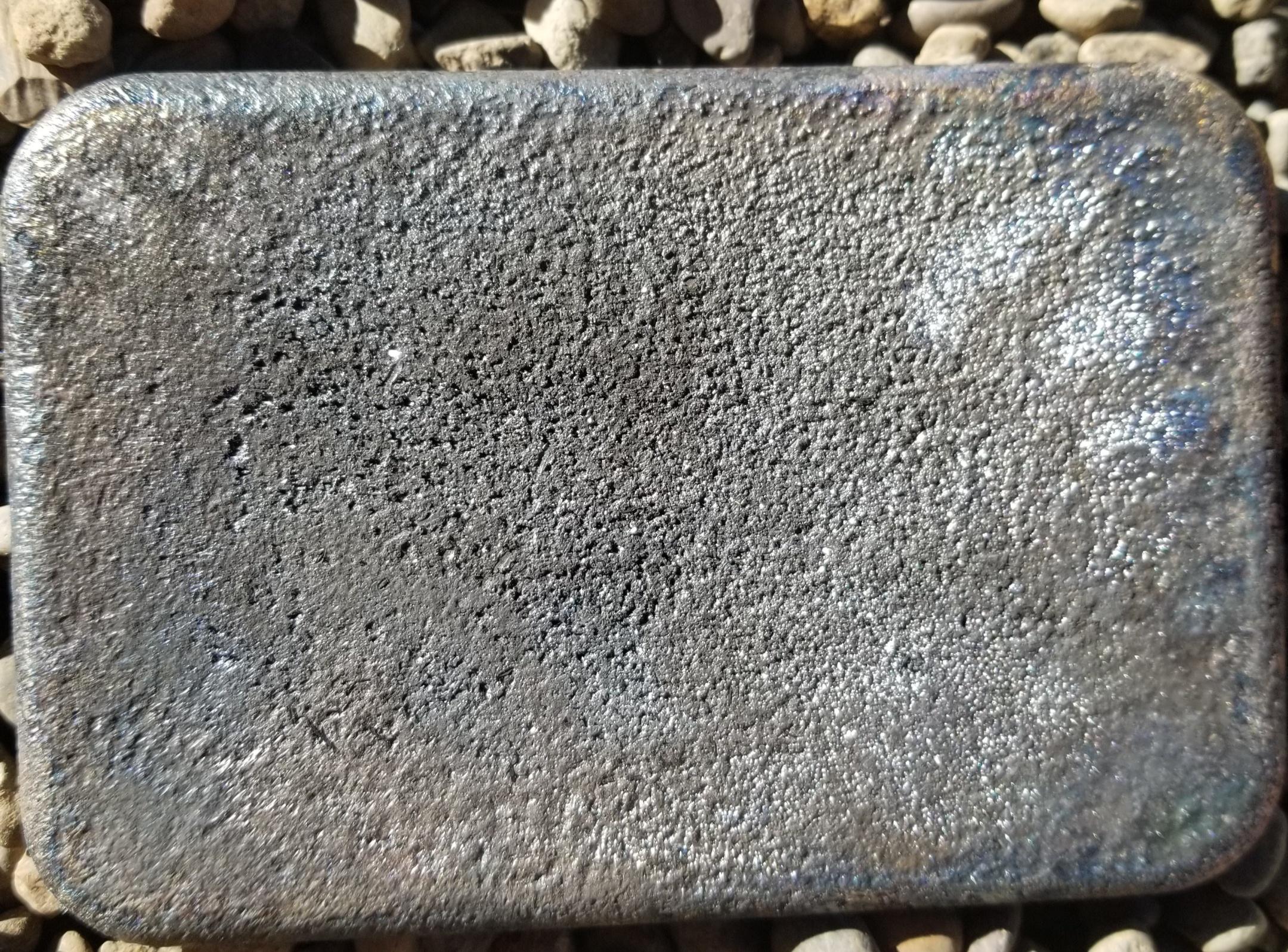jordanka16
Active Member
I bought some antimony chunks to try and make my own high hardness alloy, since I have a huge amount of pure lead and lead/tin solder, but not much else. Great for blackpowder but inefficient for anything else. 5 lbs wasn't too expensive, and at 1-3% should last for a long time.
I read about how hard it was to get pure antimony to mix with lead but I think it went pretty smooth. I melted the lead in a small cast iron pan, then added a chunk of antimony and held a torch to it until it full melted, did that over and over until i got a 500 gram bar of 50/50. When liquid it is almost like sand, very grainy.
My next step is to break it up and mix up a clone of wheel weights sans arsenic and see if it behaves the same, before I go and mix up a huge 5lb batch!


I read about how hard it was to get pure antimony to mix with lead but I think it went pretty smooth. I melted the lead in a small cast iron pan, then added a chunk of antimony and held a torch to it until it full melted, did that over and over until i got a 500 gram bar of 50/50. When liquid it is almost like sand, very grainy.
My next step is to break it up and mix up a clone of wheel weights sans arsenic and see if it behaves the same, before I go and mix up a huge 5lb batch!





